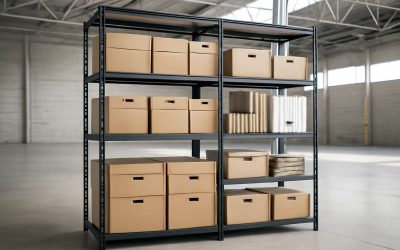
Racking and shelving are two different types of storage equipment. They are designed to handle different kinds of goods and can be used in conjunction with each other. The key difference between the two is that racking is a storage system that is stacked higher than shelving. It is also constructed to accommodate heavy loads.
Industrial racking is more commonly found in large distribution centers. It is made from heavy-duty materials such as steel. To maintain the integrity of the racking, it must be inspected regularly. This inspection should include beam loading, anchor bolts, and the vertical position of each shelf.
The first thing to consider when looking at a racking and shelving solution is how much space will be needed. If your warehouse is crowded, you will probably need a more compact unit. Similarly, if you are looking to store a lot of small items, you will want a smaller shelf. Also, you will want a racking system that allows you to easily retrieve the product you need.
A racking system is a good choice for heavier items and can be used in combination with other mechanized equipment such as forklifts. For example, pallet racking is a very efficient way to store and retrieve goods. However, it may not be the best solution for all warehouses.
Shelving, on the other hand, is a simple way to put things on a flat surface. There are a number of different designs and styles. Some are boltless, which means they are freestanding. Others are fully mechanized. Regardless of the style you choose, you will likely need to install a decking surface for hand loading.
The biggest advantage of a shelving solution is that it provides separation for your products. If you have a large inventory, you might need to sort through a huge amount of goods to find what you need. When you are done, the shelving can be dismantled. You can also add dividers to the shelves for better organization.
While shelving and racking are both effective ways to store objects, it is important to know the differences between them. By understanding the basic differences, you can make the best decision for your business. After all, your business is most valuable when it is organized and safe.
Shelving is usually a single piece of wood or metal, while racking is typically made up of several bays. Shelving is ideal for storing smaller items while racking is more suited to larger products. In addition, shelving is usually more solid than racking.
One of the best features of a shelving solution is that it can be configured to suit your exact needs. In fact, you might want to choose a shelving system that is specifically designed to fit into your existing racking system. Because it can be a complicated process, it is wise to find a credentialed manufacturing partner.
With the right kind of racking and shelving, you can efficiently store your products and keep them stacked and ready to go. Keeping your products safe is essential to your business, and the costs of not doing so can be high.



0 Comments